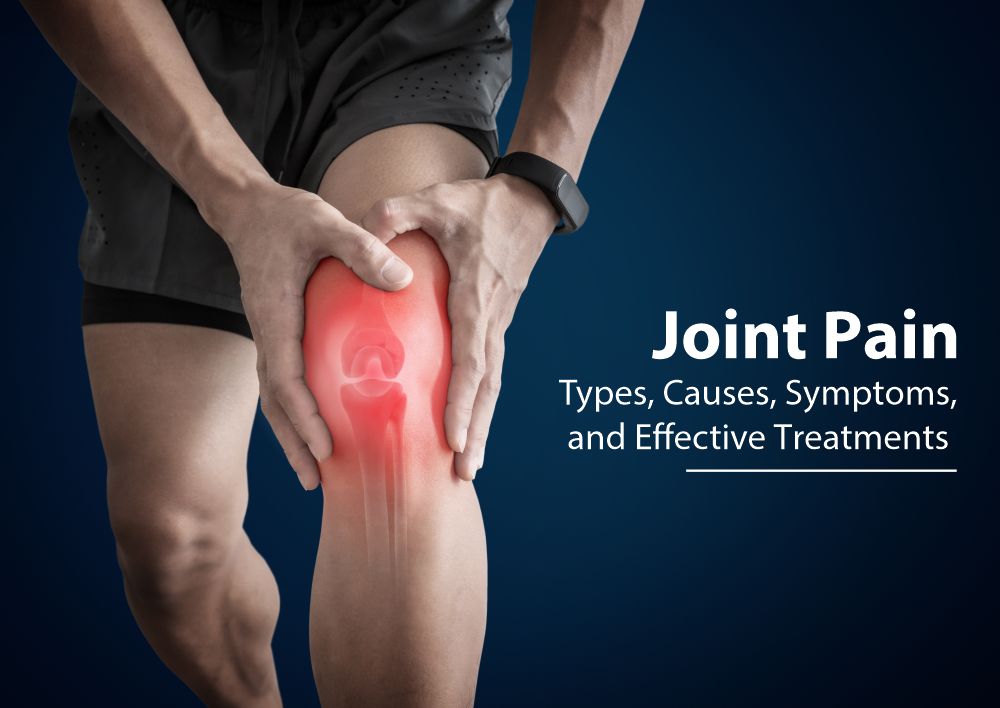Index Surge: Amplifying Your Insights
Stay updated with the latest trends and news across various industries.
Joint Pain Shenanigans: What Your Body Is Trying to Tell You
Discover the surprising messages behind your joint pain and unlock secrets to a healthier, pain-free life!
Understanding Joint Pain: Common Causes and Solutions
Understanding joint pain is essential for anyone experiencing discomfort. This condition can stem from various factors, including arthritis, injuries, or even age-related wear and tear. Common types of arthritis that lead to joint pain include osteoarthritis, rheumatoid arthritis, and gout. Additionally, repetitive movements or prolonged strain on the joints can exacerbate the pain. Lifestyle factors, such as obesity, can also contribute significantly by increasing the load on weight-bearing joints.
When it comes to finding solutions for joint pain, options vary widely based on the underlying cause. Non-steroidal anti-inflammatory drugs (NSAIDs) are often recommended to relieve pain and reduce inflammation. Physical therapy can help strengthen the muscles around the joint, improving support and mobility. In some cases, alternative treatments such as acupuncture or dietary changes, including anti-inflammatory foods, may also provide relief. Remember, it’s important to consult with a healthcare professional for a personalized approach to managing joint pain.

Is Your Joint Pain Trying to Tell You Something? Key Signs to Watch For
Joint pain can often be a warning sign from your body, indicating that something more serious may be at play. Common disorders associated with joint pain include arthritis, tendinitis, and even underlying conditions like lupus. It's essential to pay attention to the specific characteristics of your pain: is it persistent or intermittent? Does it worsen with activity or during certain times of the day? Keeping a journal of your symptoms can help identify patterns that may guide you to seek medical advice.
In addition to understanding the type of discomfort you're experiencing, there are key signs that can signal a need for professional evaluation. Consider the following:
- Swelling around the joint
- Stiffness, particularly in the morning
- Redness or warmth in the affected area
- Limited range of motion
If you notice any of these symptoms accompanying your joint pain, it's crucial to consult with a healthcare provider. Remember, addressing joint pain early on can lead to better outcomes and improved quality of life.
The Connection Between Joint Pain and Your Overall Health: What You Need to Know
Joint pain is not just a local issue; it can significantly affect your overall health. When you experience discomfort in your joints, it may limit your mobility and influence your daily activities, leading to a more sedentary lifestyle. This lack of movement can result in various health problems, such as obesity, cardiovascular diseases, and even mental health issues like depression and anxiety. The muscles surrounding the joints may weaken over time due to disuse, creating a vicious cycle that exacerbates both the joint pain and the decline in health.
It's essential to recognize the link between joint pain and other health conditions. Chronic joint pain can be a symptom of larger systemic issues, such as autoimmune disorders or inflammatory diseases. Taking proactive measures to manage joint pain can lead to substantial improvements in overall well-being. Engaging in low-impact exercises, maintaining a balanced diet rich in anti-inflammatory foods, and consulting healthcare professionals for appropriate treatment options can enhance your mobility and overall quality of life. Here are some strategies to consider:
- Regular physical activity tailored to your ability
- Dietary changes incorporating omega-3 fatty acids
- Stress management techniques